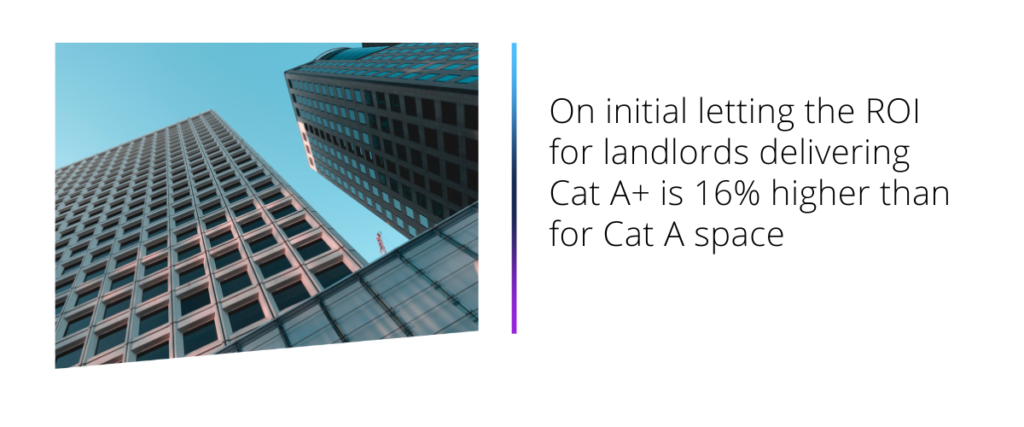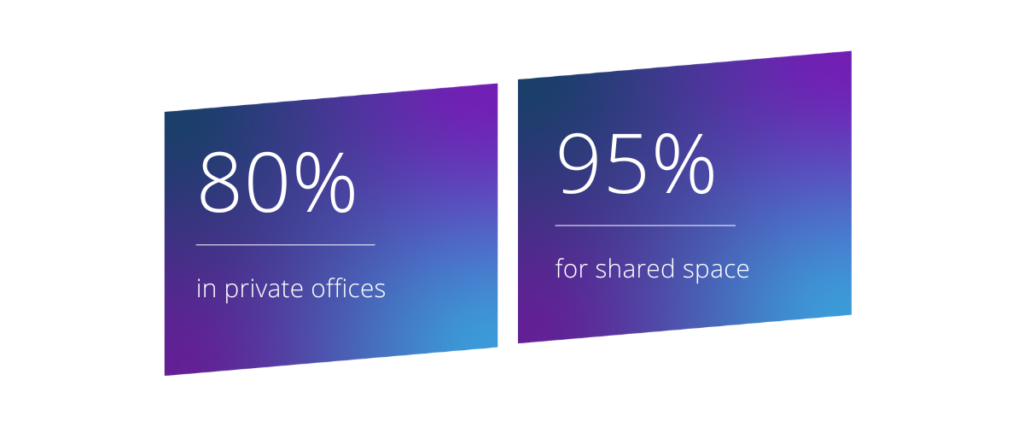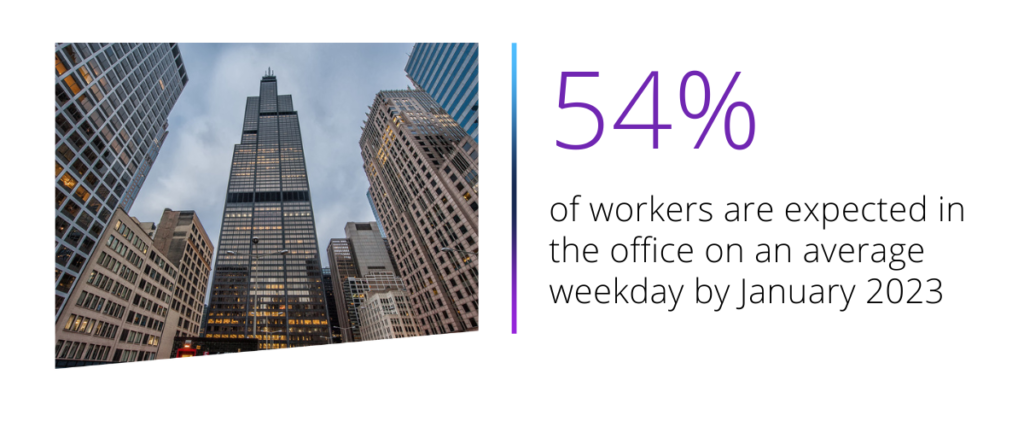CBRE recently released their Flexible Office Trends in Life Sciences 2022 study, where they surveyed the Life Sciences practice group on their clients’ adoption of flexible office space and flexible lab space.
Results show that respondents think the biggest obstacles with adopting flexible office space are IT security, data privacy and cultural fit. The survey also shows that the use of flexible office space is expected to increase including findings such as

Traditionally, a commercial office fit out project would be categorised as either Cat A or Cat B. However, recently, in an attempt to adapt to ever more demanding occupier requirements, a new category has emerged, Cat A+. This new category combines all elements of a Cat A plus added features of a Cat B fitout. Cat A+ becomes what can be also referred to as ‘plug-and-play’ space, ready for occupiers with no delay.
React News reported on recently published research from RX London & Thirdway Group who looked into market performance of the early Cat A+ space available.
- Average Cat A+ unit size = 3.8k sq ft. The largest is 16k sq ft
- Compared to Cat A, Cat A+ net effective rent achieved is around 31% higher
- Marketing void periods typically halved in length with Cat A+ space

At a time when commercial occupancy rates across the country remain stubbornly low, the report delves into how Australian office worker expectations are changing in a digital-first, hybrid work environment and how this impacts their office attendance.
Next Flex | Technology for the next generation Australian office, which surveyed 1,000 office workers across the country, was launched by essensys, a leading global provider of software and technology for the commercial real estate industry, in partnership with Flexible Workspace Australia.

- 85% of survey respondents, especially workers under 41, want to work in a flexible workspace near their homes, at least as much as their primary offices
- 57% of Australian office workers say that their office is not equipped for a flexible, seamless, agile work experience
- More than 2 in 5 (41%) feel simple tasks take too long in the office due to the standard of their in-office technology
- More than 90% of Millennials and Generation Z employees experience a gap between the technology currently offered in their office and what’s needed to do their jobs effectively
As organizations put aside their continuous readjustments to the return to the office and shift towards a long-term transformation to the new future of work, systemic and robust organizational resilience will be fundamental to sustain this new working structure.
Learn more about resilience in the built environment and its importance as organizations transform their real estate operational models and build their competitive advantage.
Savills recently published the Autumn edition of their ‘European Flex Offices’ report.
They report rising occupancy levels in flex space across Europe; they believe the core driver here is the adaptability flexible space gives occupiers during uncertain economic times. It allows them to trial different company policies when it comes to hybrid working. An additional driver the report looks at is the enhanced service offering occupiers have access to when utilising flexible space. With heightened expectations, businesses are becoming more willing to pay additional rent for enhanced services and amenities as opposed to coordinating this themselves.
Flex contract occupancy rates are back to pre-pandemic levels of over…

The Partnership for New York City surveyed more than 160 major Manhattan office employers between August 29 and September 12, 2022, to gauge the extent to which employees have returned to the office or are still working remotely. There has been a nearly 30% increase in Manhattan workers who are in the office on any given workday. Fully remote office workers have also seen their totals drop just over 50% in the same time period.

Employers remain committed to staying in New York City: 54% expect their office employee headcount will increase or stay the same over the next five years; only 10% expect a decline.
Savills have released a new edition of their European Office Outlook report. Their research shows take-up in the European office market in H1 2022 is 11% above the five-year H1 average. A growing portion of this is flexible office space; flexible space recorded a 4% increase in the share of office take-up in the past 12 months and is now 6% of the European office market. This trend looks to continue as flexible office space enquiries were also up by 83% compared to 2019.

You can read more about European office market take-up in their full report, here.
The eighth volume of APREA’s knowledge brief is themed: Technology: From Disruption to Innovation. These articles highlight how the adoption of technology has accelerated in the real estate industry. Now, developers, investors, owners, and asset managers realize the value of leveraging on innovative technologically-driven solutions to maximize efficiency, enable long-term growth, and ultimately, increase the bottom line.
The use of technology is also closely linked with the journey to sustainability, becoming an essential component of a company’s ESG initiatives. This issue will explore the different ways that technology has disrupted and innovated the real assets industry and how it will play a crucial role in shaping its future.
Read more in the full report here.
JLL’s Future of work survey calls out the long-term transformation underway of real estate portfolios. Their survey of over 1,100 decision makers across 13 markets shows that companies are pursuing new strategic workforce opportunities and focusing investments to align with new objectives.
The research identifies the next three years as a critical phase for CRE strategy, and a determining one for how successful companies will be able to adapt to evolving market dynamics.
Key resulting messages from the research are:
- Hybrid working and the rejuvenation of the office
- Investing in quality space
- Environmental and social aspirations to shape the portfolio
- Doubling down on technology investments
- Real estate needs are more complex and sophisticated
When it comes to technology, survey respondents inform on technologies in place and for adoption. In fact, 78% of companies plan to adopt more than 10 anchor technologies across their operation. JLL states, “real estate without a robust technology and data investment strategy will not be competitive, resilient and forward-thinking.”
You can read the article in full here.




